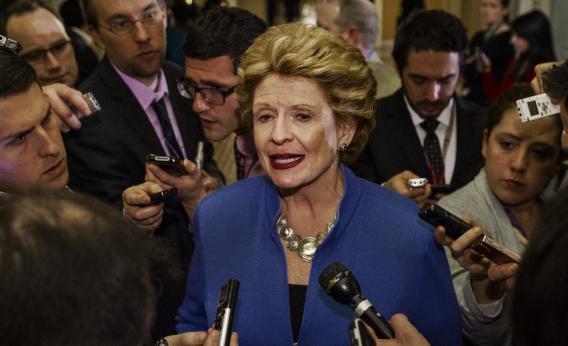President Obama is casting the fiscal cliff deal as a fulfillment of his campaign pledge to ask for more in taxes from the wealthiest 2 percent, while Mitch McConnell is boasting that 99 percent of his constituents won’t be hit with tax increases. How can that be? As with so much in the fiscal cliff—er, fiscal crisis—negotiations, it’s a matter of semantics. The top income tax rate will rise only on households earning $450,000 or more, but those earning more than $250,000 will see some loopholes phased out, so they’ll end up paying more as well.
To simplify matters a bit, here is a rundown of some of the agreement’s key specifics, as reported by the Washington Post and others:
Taxes
- For couples earning more than $450,000 (or individuals earning more than $400,000), Bush-era tax cuts will expire, and the top income tax rate will rise from 35 percent to 39.6 percent
- For couples earning less than $250,000 (or individuals earning less than $200,000), Bush-era tax cuts will be made permanent
- For households earning between those two figures, some exemptions and deductions will expire
- Investment taxes and estate taxes will rise, though with big exemptions
- Stimulus tax credits for college tuition and the working poor will be extended for five years
- Benefits for the long-term unemployed will be extended for one year
- The alternative minimum tax will not go into effect for some 30 million taxpayers, but the payroll tax cut will expire, hitting most taxpayers
- Some stimulus tax credits for businesses, including in the renewable energy sector, will be extended for one year
Revenues
- The deal will raise about $600 billion over the next decade compared to a pre-fiscal cliff baseline, less than the $1.6 trillion* Obama first sought
- Compared to a post-fiscal cliff baseline, meanwhile, the deal is a huge tax cut that will slash revenue by some $3.7 trillion
Spending cuts
- Sequestered cuts to defense and other budgets will be delayed two months, with a plan to replace them with equal measures of targeted cuts and revenue increases
Miscellaneous
- Doctors who provide Medicare won’t face scheduled pay cuts
- A nine-month farm bill fix will avoid the “dairy cliff”
- Congress will have its pay frozen again
So: You say 2 percent, I say 1 percent. You say tax hike, I say tax cut. But let’s not call the whole thing off.
Note: This post was adapted from a previous Slatest post, available here.
*Correction: This post originally misstated the amount of the revenue increase Obama had initially sought. It was $1.6 trillion, not $1.6 billion.
